Summer 2020 Newsletter
Environmental Action during COVID-19
by Adam Smith - Sustainability Intern
We are in unprecedented times due to COVID-19. Our schedules and plans have been put on the backburner. Communities across the nation have taken precautionary steps to self-isolate and avoid social interactions. From a sustainability and environmental standpoint, there have been many challenges in community engagement, education, and interaction. Campus Sustainability picked the theme of Climate Action as our focus for Earth Month (April) this year. Unfortunately, Climate Action has been difficult to pursue, but we were able to virtually connect with students, faculty, and staff. For this month’s newsletter we went on the search for a student who was able to change their plans and focus on some type of environmental action initiative.
I came across Gage Stephens' current research and journey in New Mexico on social media. Gage had posted a video and I reached out to learn more about his work. When the announcement came out that classes were going online Gage feared the security for his summer job. To take advantage of online classes he decided to go out to New Mexico with his friend while finishing his classes virtually.
Gage Stephens is a Biology major specializing in Ecology and Conservation with a minor in general science and glass blowing. Gage is involved with the Environmental Action Group, BGSU Herpetology lab, and Student Art Glass Association (SAGA). Gage also runs his own website covering his personal research, artwork, and photography (named Apple Valley Productions).
Gage is working with his friend Silas Fischer (Masters student at UT). Together they are conducting field research for a thesis project aimed at collected information on three different birds located in the Sevilleta National Wildlife Refuge in La Joya, New Mexico. They are studying Grey Vireos, Scott’s Orioles, and Ash-throated Flycatchers (pictures supplied by Gage). Gage and Silas are utilizing geolocators and pinpoints attached to the birds to identify and study their migration patterns. They are also studying the banding to identify specific birds that are not being tracked. The majority of their data is then being used to study the fledging lifestyle stages.
Their work aims to advance the sustainability of wildlife populations. All of these birds (particularly the Grey Vireo) are understudied. This work will uncover more data on how these birds migrate to Central Mexico and back to La Joya. Biologists can then use this information to better understand best practices, habitat management, and fledging life stages. Ultimately, Gage and Silas hope that their research can be used to form better species habitat arguments aimed at land protection and increasing the sustainability of natural areas.
On Earth Day Gage was able to connect with members of the Environmental Action Group (EAG) virtually. He networked through an Instagram Live meeting with a BGSU alumni discussing their current job position in forming a Climate Action Plan in Hawaii. Gage has also been collecting what most would consider trash in the desert, but he is inspired to turn this trash into artwork. So far, he has collected a horseshoe, broken glass, and a half gallon jug.
Lastly, we asked Gage what his favorite sustainable aspect was on BGSU’s campus. Gage replied, “I am proud of Environmental Action Group for always pushing BGSU to be the best it can be in regard to sustainability. For an undergraduate group the members work very diligently to remind BGSU that our students want to see a change in how we live our academic lives”. Before Gage graduates, he hopes to see BGSU take the steps to convert the old Forrest-Creason golf course into a greenspace for student to have a recreational park.
Gage’s work, collaboration, and networking activities during the times of COVID-19 is inspiring for environmental advocates. Gage exemplifies climate action by putting his education, passion for nature-based art, and free time towards sustainable wildlife efforts. After connecting with Gage, I was able to view his artwork and photography on his website. I would encourage readers to go online and check out his work! If you have a story and/or experience with sustainability that you would like shared in our next newsletter, please reach out to Greenbg@bgsu.edu
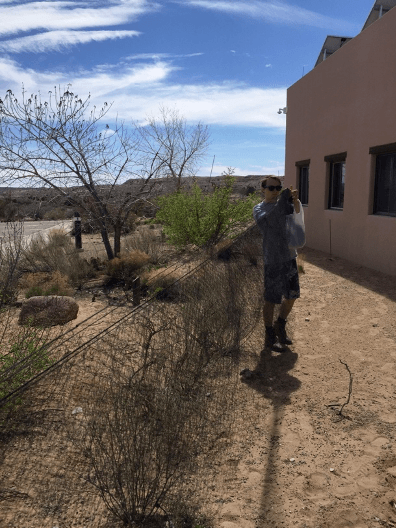
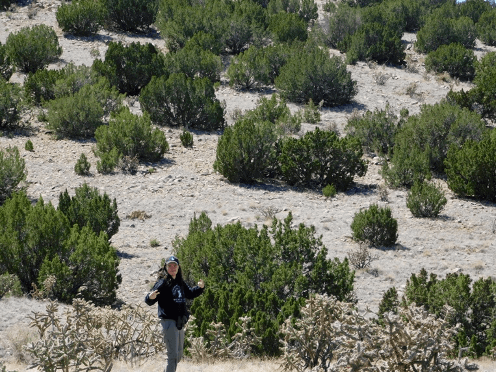
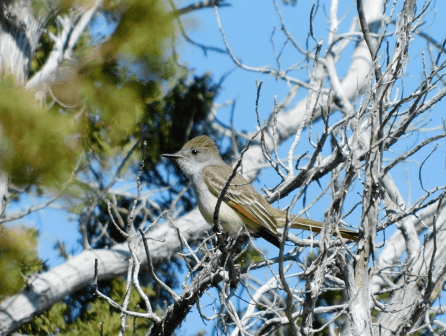
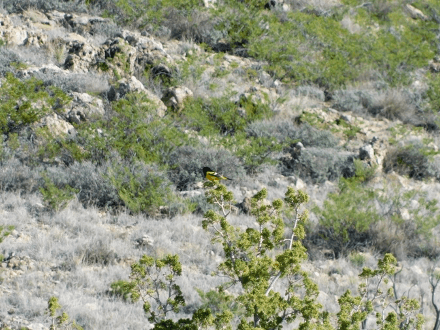
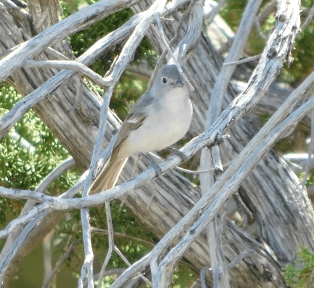
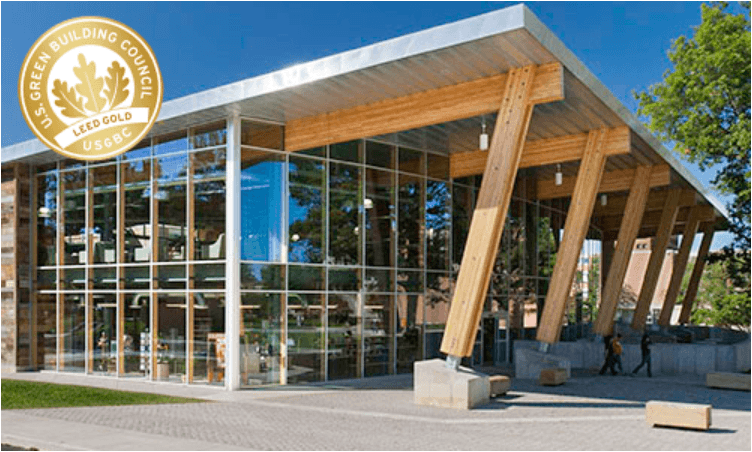
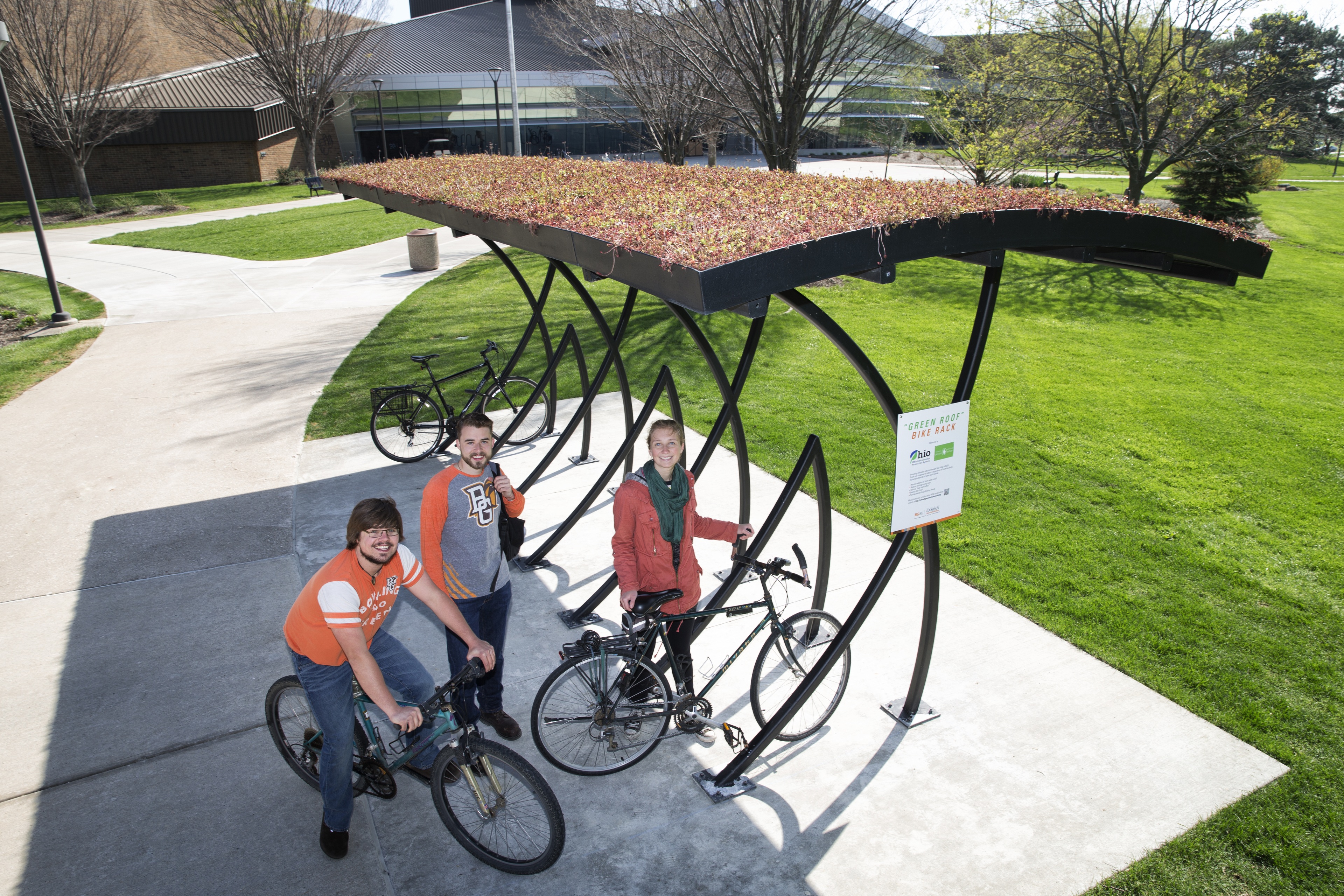
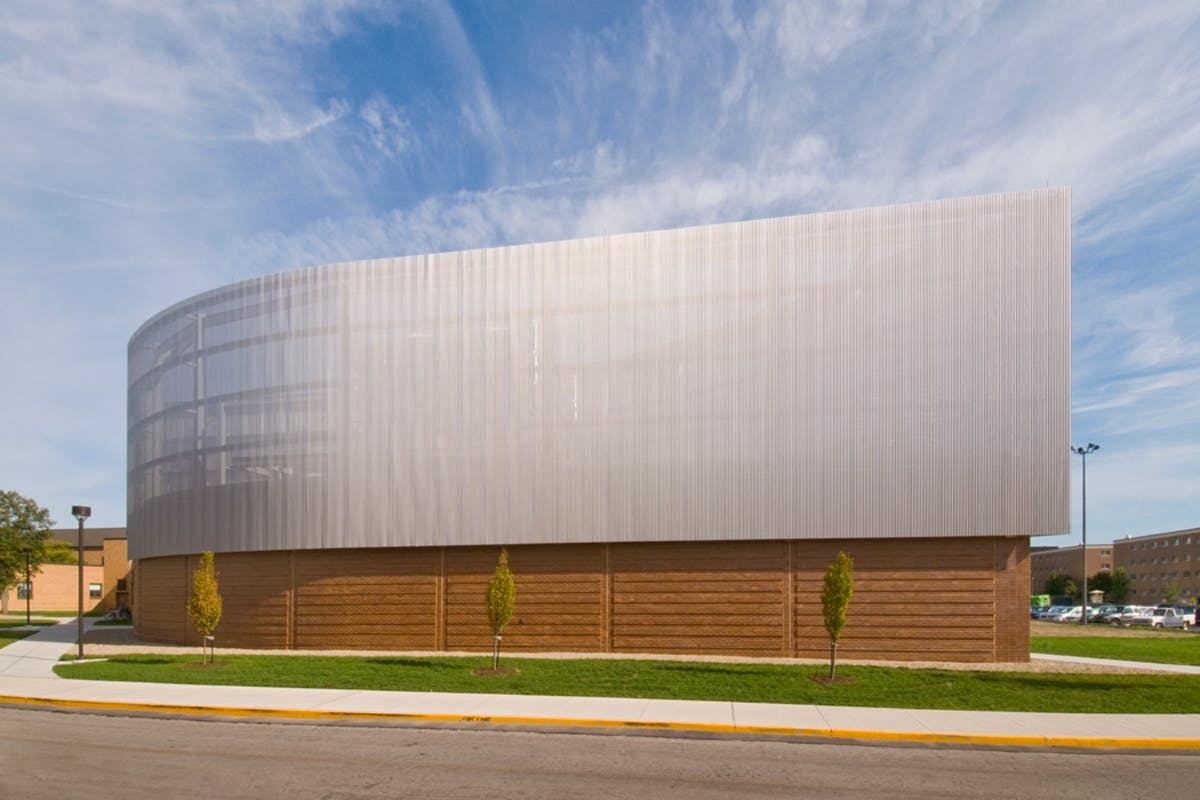
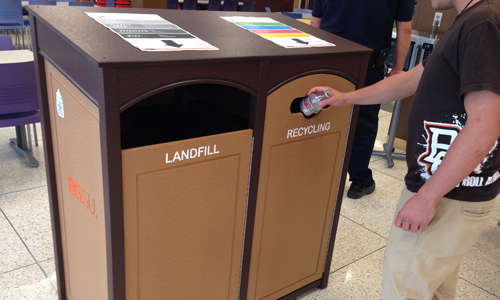
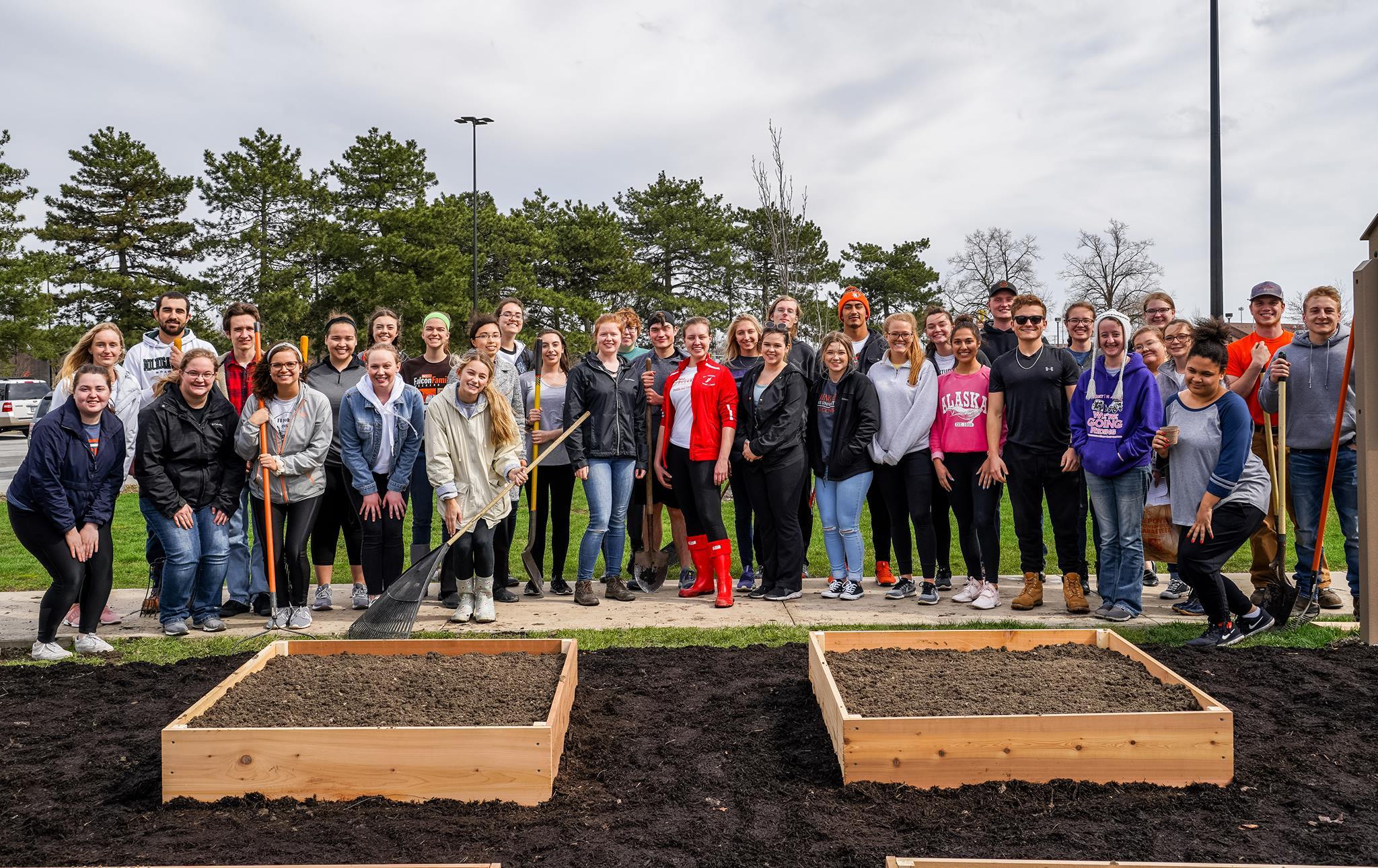
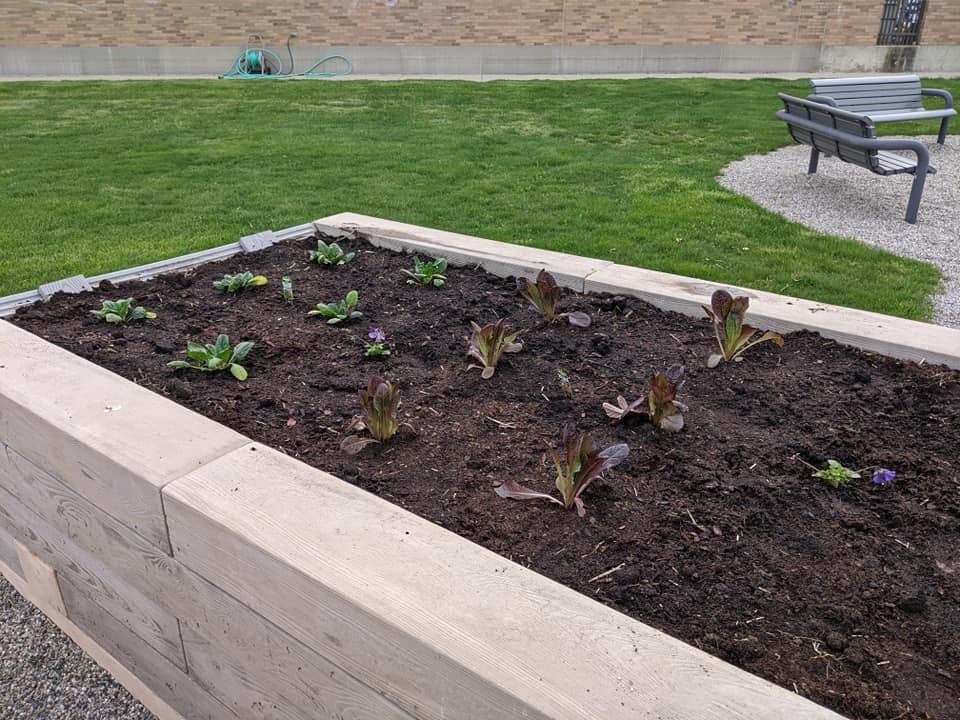
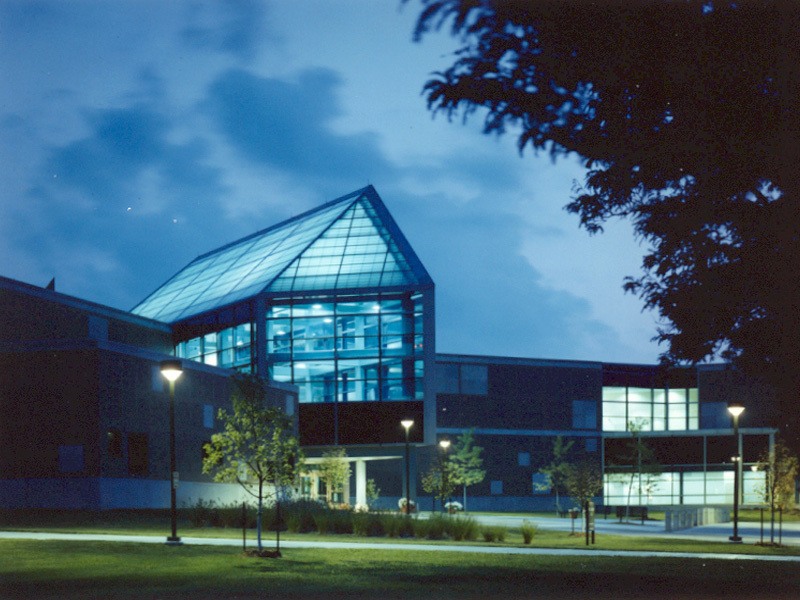
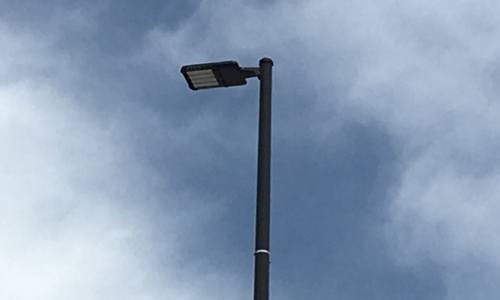
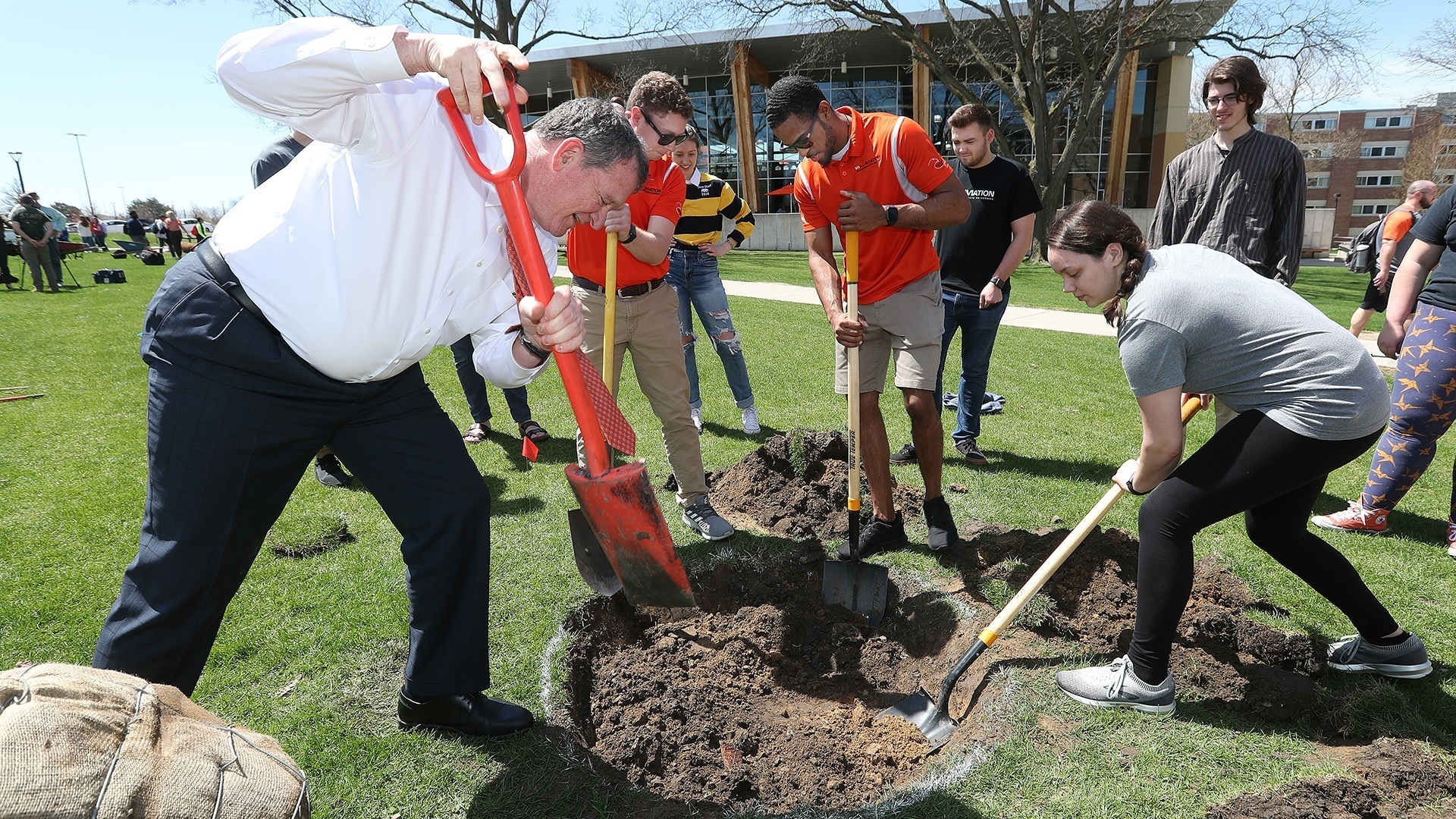
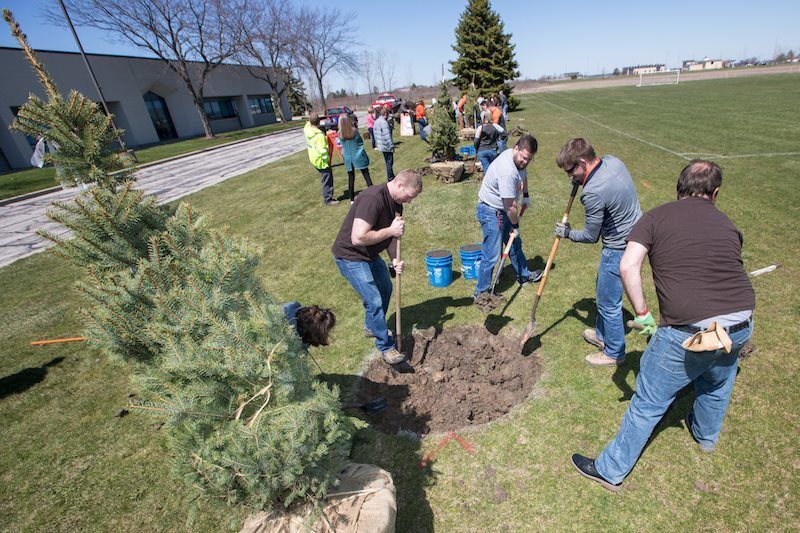
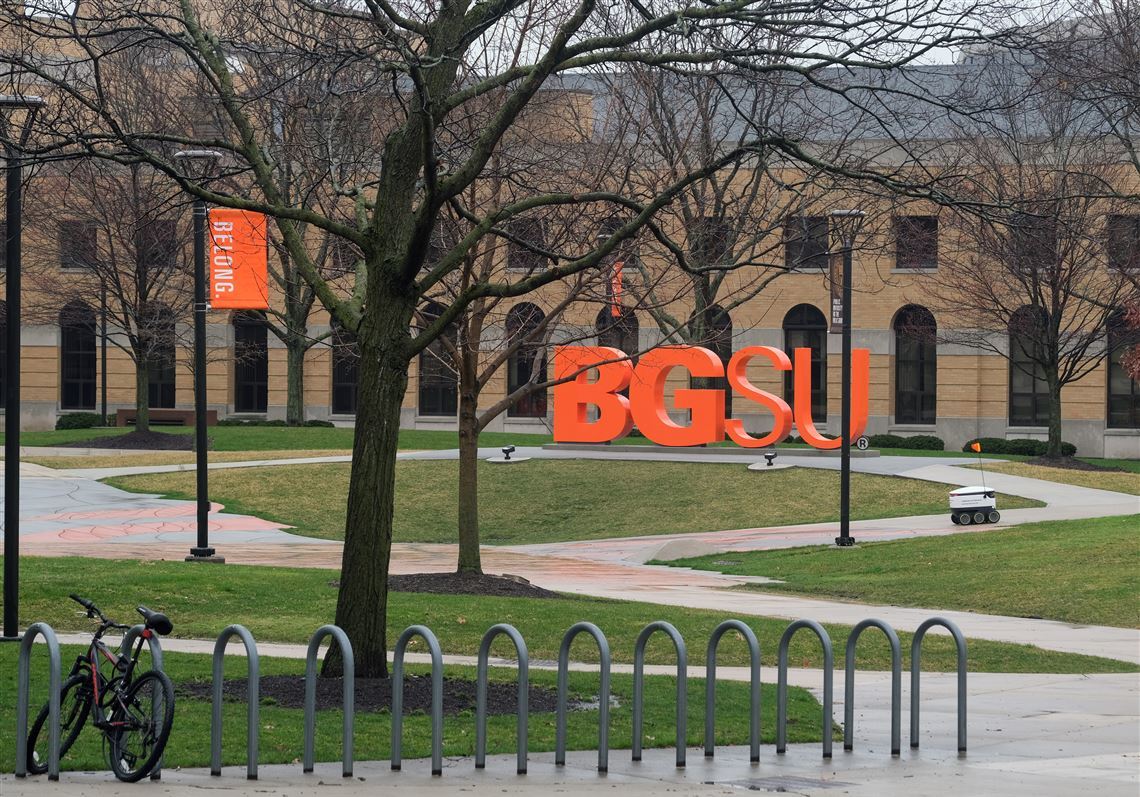
A Primer on Sustainability Features at BGSU
By Dr. Nick Hennessey - Sustainability Manager
When it comes to sustainability at BGSU, there’s a lot to talk about, as well as a lot to see. But not everything is that easy to identify; you might actually walk right by something that you didn’t even know represented the university’s move towards being a sustainable institution! While we always recommend looking at the Campus Sustainability website this short sustainability “virtual tour” will also hopefully put you on the right path, and is an “outside” tour. When we are cleared for interior access to buildings once again, we’ll share an indoor tour as well in another newsletter issue.
LEED certified buildings: It’s hard to travel the campus and not pass or encounter one or more LEED buildings! BGSU currently has 11 buildings certified by the U.S. Green Building Council as sustainable at various levels. All these certifications have resulted from new and renovated construction over the past 9 years, and currently include The Oaks and Carillon Place Dining Centers; Stroh Center; Wolfe Center; Student Recreation Center; Greek Village; Moseley Hall; University Hall; Kuhlin Center; Park Avenue Architecture Building; and Ohio BCI. To see what each building contains that made its construction and operation more sustainable, check out the links off the Campus Sustainability webpage.
Green Roof Bike racks: There are two bike racks on campus that look like carports with a layer of green plants on the roof; something out of a Dr. Seuss book! They are green-roof bike racks, obtained through a grant from the Ohio E.P.A. which was matched by the Student Green Initiatives Fund. The tops consist of hardy sedum. The racks themselves were designed by a Columbus, Ohio firm, and were first featured in the Capital Crossroads Improvement District in downtown Columbus. BGSU and Ohio State are currently the only two campuses that received the EPA grants for the racks, which demonstrate the effects of storm water diversion and the design of a living roof.
Central chiller plants: What happens when you create a central area/plant for cooling water to be used for air conditioning buildings rather than have each individual building do it? You save lots of energy, electricity, which helps reduce our carbon footprint. We have three such plants that collectively, have significantly reduced the electricity used in chilling water for air conditioning. While two are inside buildings (Olscamp Hall basement and Centrex), the free-standing plant is east of the Fine Arts building and has been affectionately referred to as the “Titanic”.
Recycling “Z Wall”: Ever wonder how recycling from our various buildings makes its way to the place where it actually gets recycled? BGSU’s commingled recycling is picked up from buildings and transported out to an area behind Campus Operations known as the “Z Wall”, since it’s a concrete dock that looks like a “Z” from above. The recycling truck drops off recycling at the large 30 yard containers docked at the wall, and those containers are eventually picked up by Waste Management, Inc., BGSU’s recycling provider, and transported to the recycling sorting plant in Southfield, Michigan.
Community Garden
The BGSU Community Garden is a project that has involved a great deal of collaboration on campus. The Center for Public Impact, BGSU Dining, Campus Sustainability, and a whole host of volunteers have played a vital role in the development of the garden. The current focus with the project is growing essential food that food pantries in the Bowling Green community need. More specifically, the CPI is partnering with Brown Bag Food Pantry and supplying them with harvests throughout the year. The current crops being cultivated include radishes, carrots, zucchini, tomatoes, onions, broccoli, lettuce, strawberries, and more! You can find the BGSU Community Garden located behind the Fine Arts building on campus! You can follow the BGSU Community Garden on Facebook!
LED Exterior Lighting: Stand near the corner of Willard and Ridge Streets and look west. Or check out the lighting the BA Building Quad area. Bright isn’t it? Exterior lighting on campus is in transition to LED, resulting in a triple win! Lights are brighter, increase safety for the community and save energy and money since they use about half the energy of the older lighting technology. That’s a scenario that the Student Green Initiatives Fund thought perfect for funding the first two phases of an all-campus exterior lighting conversion. The Green Fund is a pool of money created from students who pay a nominal $5 fee per semester for sustainability projects that make major differences in BGSU’s sustainability profile. Over $1 million has already been invested by the Fund in campus-wide sustainability projects! Learn more about the green fund by following the link!
Trees, Trees, and more Trees!: BGSU maintains a GIS database of every single tree that exists on this campus, complete with its species, trunk diameter, age, and other important statistics. This helps the Grounds Department to manage the university’s overall Tree Plan, and determine where trees should be planted, where they are vulnerable, and how to keep them healthy and thriving. Campus Sustainability works with Grounds to provide volunteers for larger tree planting projects for events like Earth Month in April and Campus Sustainability Month in October. One such project took place last spring in front of the Oaks Dining Center, where you can see 7 healthy Oak trees, native to Ohio, well on their way to becoming “stately”.
Where Are They Now!?
by Adam Smith - Sustainability Intern
Over the years, many interns have walked in and out of The Office of Campus Sustainability doors. These interns have made major contributions and impacts that have marked successful milestones for the Office of Campus Sustainability. We wanted to know what these interns have been up to and how the work they did as an intern has impacted their lives. Therefore, we have started the new newsletter series “Where Are They Now?”.
This month, The Office of Campus Sustainability caught up with Lance Kruse.
Lance graduated with a B.S. in Secondary Education, Integrated Mathematics (May 2015). Since his time as a Sustainability Intern he has gone on to earn an M.Ed. in Curriculum and Teaching (Aug 2016 ) and a Ph.D. in Foundations of Education: Research and Measurement (Dec 2019) from the University of Toledo. Lance is currently a Research Scholar at the Friday Institute for Educational Innovation at North Carolina State University – on the STEM Education Policy Research team.
Lance Kruse | Campus Sustainability Intern 2012 – 2015
Lance worked as a sustainability intern for Dr. Nick Hennessy (Sustainability Manager) between 2012 – 2015. At the same time, Lance was also an RA on campus. Lance recalls many memories of his time with Campus Sustainability. He began as an intern with Dr. Nick assisting with general programming. For example, he supported Friday Night Lights, Green Game Day (back then called Green Tailgating), WYMO, and other student-led initiatives.
During this time, he was also a member of a student organization called Net Impact BGSU. During his time with Net Impact, he began a petition of support to encourage BGSU President Mary Ellen Mazey to sign the American Colleges & Universities President’s Climate Commitment (PCC). In total, they obtained more than 5,000 student signatures and endorsements from USG, many Greek life organizations, and every hall council on campus! During the spring semester in which he was Dr. Nick’s intern, President Mazey presented the PCC to the Board of Trustees, who in turn gave the green light for an exploratory committee to be created to determine the feasibility of signing the PCC. Subsequently, in the Fall of 2012, the PCC was signed by President Mazey, leading eventually to BGSU’S Climate Action Plan and the move towards carbon neutrality by 2040.
Lance took full advantage of his opportunity to influence and shape sustainable initiatives on BGSU’s campus. He was able to attend meetings with Dr. Nick and together they began to draft plans for moving the university even closer to carbon neutrality through more rigorous programming such as pre-consumer composting at the Oaks, the creation of the Green Office Program, and the university’s new single-stream recycling program. Lance also played a vital role in redesigning the Campus Sustainability website. Not only did Lance have a major contribution to our university’s stance on sustainability, but his sister, Brooke Mason, who was the first Sustainability Intern in the Office of Campus Sustainability, wrote the Green Fund proposal for the Oaks Green Roof!
Lance recalls, “My work with Dr. Nick was my first experience working in a professional office setting…as a first-year student, it provided me invaluable opportunities to learn how to interact professionally with administrators, faculty, and staff to work towards a common goal of improving the sustainability of the university”. Lance went on to describe how these experiences are impacted his professional work today. In addition, Lance gives Dr. Nick much credit for his current passion and purpose in life, “My work with Dr. Nick sparked a passion to live a life that makes a net positive difference in the world, which coalesced with my degree in education”.
Some of Lance’s favorite memories working with Campus Sustainability were during WYMO. Lance recalls the many laughs they had at the unique items that were donated. He spoke about the life-sized chicken costume they found! Lance enjoyed seeing how items were diverted away from the landfill and went to many non-profits to be put to good use.
Outside of school and work Lance enjoys traveling with his partner and three-year-old pup, Velma. Together they have traveled to Thailand, Spain, Greece, Mexico, and many other places around the world!
Lance left our interview by giving the advice to present and future students pursuing sustainability-related fields, “We have really important work to do in the coming years to combat climate change and we need people both on the outside demanding change, but perhaps more importantly, individuals on the inside working to make those changes when the opportunity presents itself. It is crucial that individuals learn how to make changes from within an organization so that over the years, we can continue to progress as a nation towards a more sustainable society.”
Do you have any special memories of Campus Sustainability interns? Let us know at Greenbg@bgsu.edu.
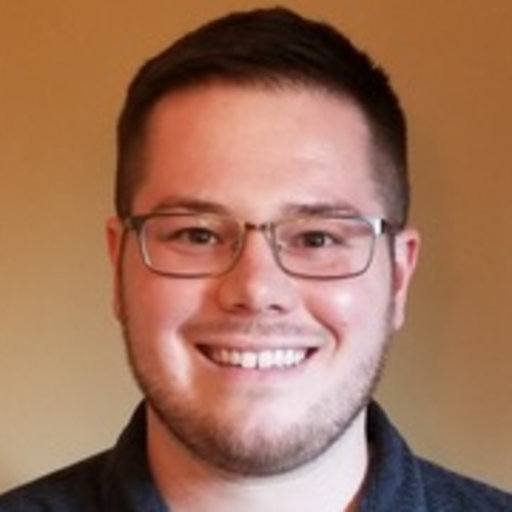
Like staying up to date on all of BGSU's sustainability updates? Be sure to subscribe to this newsletter to get it sent to your email inbox each month!
Updated: 01/19/2024 01:03PM
